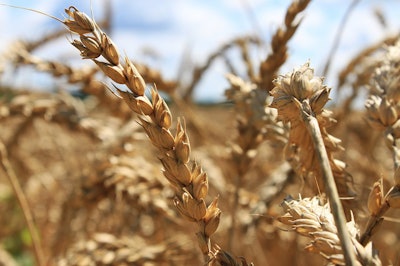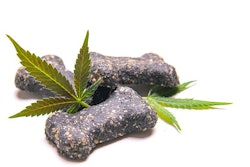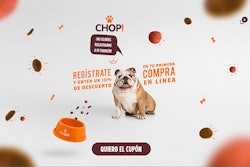
In the wake of the ongoing investigation by the Food and Drug Administration (FDA) into grain-free pet food’s possible link to cases of canine dilated cardiomyopathy (DCM) – and the confusion and anxiety stoked by FDA’s alerts and updates on the investigation – some data on pet owners’ attitudes about grain-free pet food bear watching.
According to a survey of U.S. pet owners conducted by Packaged Facts in July/August 2019, exactly half are strongly or somewhat confident in the safety of grain-free pet foods, while nearly the same percentage (49%) strongly or somewhat agree that the foods are healthier. The flip side is that 14% are strongly or somewhat unconfident in the safety of the foods, with the same percentage not agreeing they’re healthier. The data accompanied an article by David Lummis, lead pet market analyst for Packaged Facts, in Pet Product News magazine.
Perhaps the percentages most worth watching and analyzing from this consumer survey represent the people in the middle: 36% neither confident or unconfident about grain-free pet foods’ safety and 37% neither agreeing or disagreeing that they’re healthier. Which side these apparently on-the-fence pet owners come down, and to what degree, likely depends on any further information on DCM forthcoming.
Grain-free pet food sales slide
Of course, the ultimate barometer of what pet owners now think about grain-free pet food is whether they’re still buying the products. Sales data presented in October by Natasha Davis, strategic client partner with Nielsen, showed that the 16 grain-free pet food brands listed most prominently in FDA’s most recent alert (June 2019) declined, in aggregate, 10% from mid-July through mid-October. Nielsen’s data also indicated sales of grain-free pet food overall slowed year-over-year: Through September 22, 2018, they were at U.S.$2.9 billion, representing 9.6% growth over the previous year. As of September 21, 2019, sales were flat or experiencing a slight decline of -0.3%, Davis said.
To be clear, growth rates for grain-free pet food had started leveling off earlier, possibly due to DCM concerns, but perhaps also because the category was approaching market saturation. From 2012 to 2016 – grain free’s heyday – sales in the U.S. pet specialty channel soared 221%, according to Maria Lange of GfK (which is now part of Nielsen). From 2016 to 2017, that growth rate dropped to 10%, still healthy but not quite as robust. In 2018, sales growth of grain-free pet food in all U.S. channels was 8.6%, Lange said during a January 2019 webinar.
Larger impact on pet specialty stores
It's important to note that the 8.6% increase was driven, at least partially, by grain-free growth in channels outside of pet specialty (and e-commerce). Though she didn’t provide a grain-free sales growth rate for what Nielsen terms all other channels (AOC), Lange did say that distribution, sales velocity and number of grain-free pet food items were all increasing in AOC outlets. These include grocery stores and mass market retailers.
Now, perhaps that growth has changed over the course of 2019 and is in fact reflected in the flat grain-free sales scenario that Davis presented for all channels in October. Yet the sales fall-off – the fall-out from the DCM investigation – is likely hitting pet specialty the hardest. “The controversy highlights that independent pet specialty is largely over-indexed in grain-free solutions, which presents a risk to the channel,” wrote Bryan Jaffe, managing director of Cascadia Capital, in its Fall 2019 Pet Industry Overview.
“We estimate that the merchandising mix in independent pet is comprised of over 50% BEG [boutique, exotic and grain-free] diets,” he told my colleague, Tim Wall, in a follow-up interview. “In some chains, it is as much as 70%. If consumers shun BEG diets in a meaningful way, the channel stands to lose traffic and transactions. While pet shoppers are not channel loyal, once you lose them they are hard to get back, especially for small box pet retailers who lack a meaningful service component to attract customers. This is a secondary risk of the DCM issue that very few people are talking about.”
What does the future hold for grain-free pet food?
Lummis, for one, doesn’t see grain-free going away completely. “Don’t expect to see grain-free pet food disappear,” he wrote. But he also highlighted the various new pet food products featuring grains introduced at SuperZoo 2019 and since. And, he commented, “from the start, the grain-free premise was flawed: The dogs and cats of yesteryear did consume at least small amounts of grain via the stomach contents of their prey, and the dogs of today have long since evolved to a diet rich in starch.”
Jaffe presented a similar argument in his report. “Science does not actually come down on either side of the debate,” he wrote. “Grain-free benefits are no more proven than grain-free detractors; it’s marketing and consumer perception that equates grain-free with premium.”
But perhaps most of all, Jaffe pointed out, the popularity of grain-free pet food to this point “illustrates the extent to which the pet owner now controls product selection.” Hence, the seemingly coming tide of “grain friendly” products to answer consumers’ and retailers’ demands for something other than grain-free in the wake of DCM-fueled anxiety. From pet food companies’ perspective, this situation has also created an “opportunity for product providers who have moved in advance of a clear outcome of the DCM investigation,” Jaffe added.
FDA should expand DCM investigation, base updates on science
That clear outcome is not guaranteed. Many nutrition experts and others in the industry, including the Pet Food Institute (PFI), are urging FDA to expand its investigation from a narrow focus on diet alone – because even if diet is eventually proven to be at least a partial contributor, the only way to know that for sure is to rule out other modes of causality.
“PFI has advised veterinarians that any reports to FDA regarding diagnosed DCM cases should include a complete medical history, diet history and echocardiogram results,” wrote Jacinthe Moreau, president of the World Pet Association, also in Pet Product News. Others would likely add that the complete diet history should include everything the affected dog has consumed – treats, table scraps, supplements, etc. – not just a commercial dog food.
“In addition, its members are working internally to study hypotheses related to DCM and diet,” Moreau continued. “Dana Brooks, PFI president and CEO, has urged FDA to release public messaging that reflects the science and facts, and doesn’t contribute to pet owner confusion.”
That last element is key to this entire situation, as well as to the future of grain-free and other pet foods – to the market itself. If, as Jaffe contends, pet owners do control product selection and, by extension, product development, it’s crucial that they fully understand any situation affecting what they’re feeding their pets and feel peace of mind that they’re buying the safest pet foods possible.
















